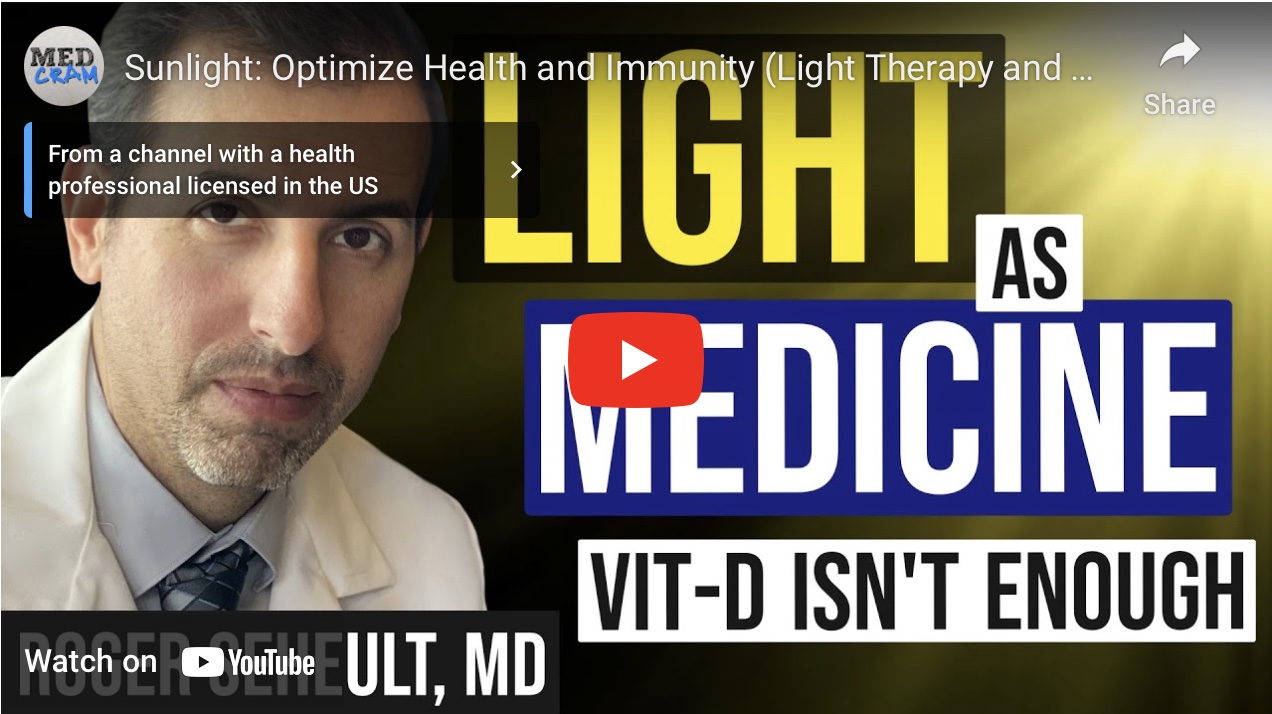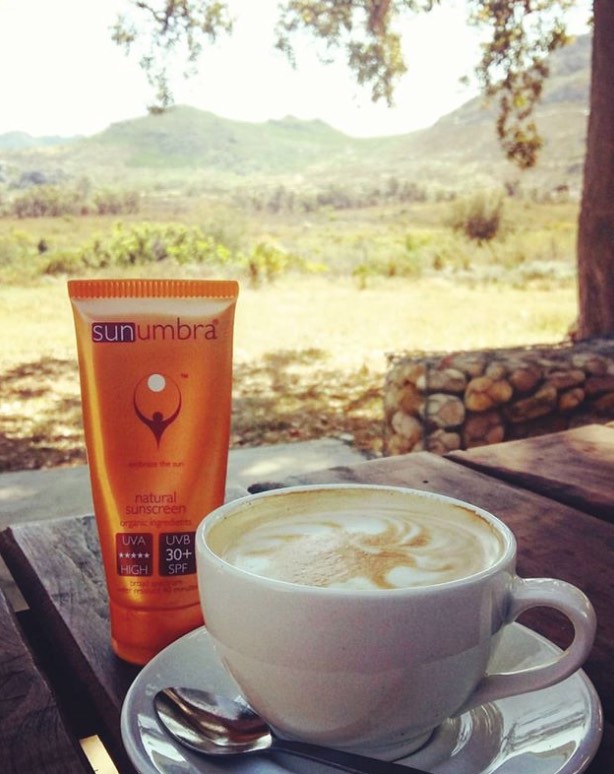sunumbra sunscreen FAQ
The sunumbra sunscreen faqs listed below are linked
directly to the answers further down the page...
The following is a list of the most frequently asked questions. If you can’t find your question answered here, please send your query using the 'Questions and Comments' form further down this page.
1. Sunscreen application
- Can I use sunumbra® on babies?
- Is sunumbra® safe to use on the face?
- How much sunscreen is right to apply?
- Is sunumbra® suitable for very sensitive skins?
- How do I wash sunumbra® off?
- Is sunumbra® suitable for Skiing and Water sports?
- How safe is sunumbra® when pregnant?
- What to do if you’re allergic to sunscreens?
- How easy is it to spread sunumbra®?
- Do sunumbra® sunscreens cause staining on clothes?
- How non-whitening is sunumbra® on dark skins?
- Why did my cream have some watery oil come out when I first squeezed it?
- Why are mineral sunscreens more expensive than chemical sunscreens?
2. Certification and properties
- Why is non-nano zinc oxide the best choice of all the sunscreen ingredients?
- Are sunumbra® sunscreens waterproof?
- Are sunumbra® sunscreens Reef Friendly?
- Is sunumbra® Certified Broad Spectrum with good UVA/UVB balance?
- What does ‘broad spectrum’ mean?
- What does a UVA 5 Star rating mean on sunumbra® products?
- Do you provide a full ingredients list?
- Do sunumbra® sunscreens contain Oxybenzone, Octinoxate, Octisalate, Avobenzone, PABA or Vitamin A?
- Are sunumbra® sunscreens Gluten Free?
- Are sunumbra® sunscreens Fragrance Free?
- Are sunumbra® sunscreens Vegan friendly?
- Do sunumbra® sunscreens have expiry dates?
- What benefits do the botanical extracts have for sun protection?
- Is sunumbra® sunscreen safe for cats?
- What is your policy on Cruelty to Animals?
- Are sunumbra® sunscreens good for acne sufferers?
Have a question yourself?
Do you have a question or perhaps wish to make a comment or even tell a story about an experience with sunscreen? Please share it! Others will benefit and may join the conversation.
1. Sunscreen Application
Can I use sunumbra® on babies?
The short answer is yes. The long answer follows:
Patricia Treadwell, a peadiatric dermatologist, was asked about using sunscreens on babies and I particularly enjoyed her answer. The following contains some of her response:
"I recommend choosing a "physical" or "chemical-free" sunscreen made with zinc oxide or titanium dioxide. I also suggest you keep a baby younger than 6 months out of the sun altogether whenever possible. When that's just not practical, be sure to protect your young baby with sunscreen. Unlike chemical sunscreens, which may cause irritation or allergic reactions because the skin absorbs the active ingredients, zinc oxide and titanium dioxide sit on top of the skin, forming a barrier against the sun's rays.Besides the increasing evidence that chemical sunscreens are dangerous or toxic, we just don't know enough yet about how young children react to the ingredients.
Also, sunscreens with zinc oxide or titanium dioxide start protecting as soon as you put them on, whereas chemical products need to be slathered on 15 to 30 minutes in advance so the skin has time to absorb them."
Peadiatrician Jerome A. Paulson, MD, FAAP, medical director for national and global affairs at the Child Health Advocacy Institute of Children's National Medical Center in Washington, D.C., was asked this same question by WebMD. Their top recommendation was to choose a sunscreen that contains zinc oxide or titanium dioxide, because the compounds are less irritating than others and do not get absorbed into the skin.
"These ingredients are probably the safest ones out there right now." Paulson says.
These opinions both concur with many other peadiatricians and dermatologists, as well as the EWG (Environmental Working Group) who have done considerable research into the health of the ingredients used in sunscreens.
So, my answer where sunumbra® is concerned is that it is perfectly safe to use on infants older than 6 months. IF, and only IF, you need to use a sunscreen on a child younger than 6 months, it is one of the safest available out there. However, it is universally agreed that using sunscreen on a child younger than 6 months is not advised.
sunumbra® sunkids formula has an additional ingredient of Astaxanthin, which helps boost the baby's own natural system with the ability to combat potential damage from the sun. As a free radical scavenger, astaxanthin is 65 times more powerful than vitamin C, 54 times stronger than beta-carotene, and 14 times more potent than vitamin E.
Is sunumbra® safe to use on the face?
Sunumbra sunscreens are all very safe to use on your face, no matter what type of skin. They contain no toxic synthetic chemical ingredients, as well as no chemical sunscreen filter ingredients.
Some people prefer to use a moisturiser underneath their sunscreen, but this will depend on whether your skin is a dry, mixed or oily type. many like the sunscreen alone as it is moisturising enough. Sunumbra Classic and Sunumbra Sunkids have a natural tint, so some people use these instead of a foundation. However, makeup can be worn on top of the sunscreen.
People with sensitive skins or parents of children with allergic reactions to sunscreens, are especially fond of Sunumbra and we have received many messages thanking us for making a sunscreen that is non-toxic and clean and therefore gentle on their skin, without any skin reaction. In many cases people have searched for years to find a sunscreen that works as efficiently without causing any reactions.
Sunumbra products vary somewhat from the Daily (SPF15) to the Sport (SPF40) where the Daily is specifically designed for wearing every day and the Sport is specifically designed to be much more robust for wearing when actively engaged outdoors.
All the sunscreens will be absorbed into your skin after a little time, depending on how much you have applied. Applying makeup over them will to some degree then depend on the texture of your makeup but in general will not apply unevenly.
How much sunscreen is right to apply?
Such a wonderful query as this relates to a global issue with sunscreens: How much is enough?
The answer lies in the combination of :
- the capabilities of your skin to withstand long hours in the sun
- the strength of the sun on the specific day
- the amount of cream applied
- how often you reapply
Also, specific circumstances related to the location you are at can increase the strength of the sun's UV rays - latitude, altitude and how clean the air is, or unfiltered.
Our sunscreen does not block the sun's rays completely - no sunscreen does - so it is always advisable to know your limits and wear protective clothing when conditions dictate.
Most especially a hat.
And always reapply!
Remember that our sunscreen not only protects from the sun, but helps to heal by boosting your skin's ability to deal with any potential damage.
The FDA tests a sunscreen's SPF using 2 milligrams of sunscreen per square centimetre (2mg/cm2) of skin. This equates to about 1oz for a full adult body (about a shot glass full) or about 1/3 of a teaspoon to cover your face.
It's nearly impossible to actually measure and evenly apply sunscreen according to these guidelines, so we suggest applying a visibly whitening coat of sunscreen to all exposed skin and rubbing it in to reduce the whitening effect.
To ensure that you have achieved full and even coverage, let this coat dry/absorb for 15-30 minutes and then reapply. Think of it as a base coat and finish coat. To maintain maximum effectiveness, sunscreen as a general rule, should be reapplied at least every 2 hours if in the sun and directly after swimming or sweating.
For sensitive skin, apply a small amount of sunscreen to the inside of your wrist to test it before full use.
Keep out of the eyes. It’s not toxic to the eyes, but will feel unpleasant and likely sting.
If separation occurs, knead the tube to remix the sunscreen before use.
Is sunumbra® suitable for very sensitive skins?
sunumbra® is designed especially to be able to cater for all skin types by not only being free of toxic ingredients, but including ingredients that are healing, boost the health of the skin and are calming.
We have tested our sunscreens very specifically on those who normally suffer side effects from the chemical based sunscreens. These side effects can include skin rashes or even pimple/acne outbreaks, or a flushed effect with reddening of the skin. We have had numerous positive feedback emails to affirm sunumbra® does not produce these sort of effects, but welcome more feedback.
There is no added fragrance in any of our sunscreens. The aroma experienced is from the natural ingredients and in the case of the Sunumbra Classic and Sunumbra Sunkids the essential oils of Geranium and Cedarwood Atlas are more dominant.
How do I wash sunumbra® off?
We recommend using a simple exfoliator like a little bicarbonate of soda powder rubbed onto your skin with enough water just to wet it. Or a homemade mix of coffee grounds and some coconut oil. The latter is a great moisturiser too, even with an oily skin type.
Is sunumbra® suitable for Skiing and Water sports?
- sunumbra® provides high protection from both UVA and UVB rays. Most sunscreens don't offer this protection as they protect only against UVB. This means that you are only protected from getting a sun burn, and you are not protected from getting skin cancer or premature ageing of the skin. Those that do provide UVA as well as UVB do not often stipulate the level of UVA protection.
- At higher altitudes you have more direct exposure to the sun simply because you are physically closer to it. This is why it is important that you select a sunscreen that offers a higher SPF protection. SPF30 is considered high enough as it provides 97% UV protection. SPF60 provides for 98%. No sunscreen provides 100%.
- It is also important that when you go skiing you remember to moisturise. Air tends to be drier at higher altitudes and this will have an impact on your skin since dry skin burns faster than moist skin. sunumbra® has excellent moisturising qualities as well as a natural boost to the skins own abilities to protect itself from damaging UV rays.
- sunumbra® is photo-stable, meaning that it doesn't degrade when it comes into contact with the sun.
- sunumbra® is tested and approved as being water resistant for 40 minutes. Many other sunscreens claim to be waterproof, in which case they tend to clog the skin's pores and not allow them to breathe. The general rule here is if wiping off sweat or snow or sleet, make sure to reapply your sunscreen.
How safe is sunumbra® when pregnant?
Our sunscreen formulas are designed to be 100% free of harmful chemicals. The key objective for us was to create a sunscreen that would enable protection for ourselves from the sun's UVA and UVB rays while not contaminating our bodies with bad chemicals.
The sunscreen active ingredient is Zinc Oxide and this is, we believe, by far the safest option available of all the approved sunscreen ingredients. As a physical block, it sits on your skin and reflects the sun's rays, rather than being absorbed by the skin as the other chemical sunscreen actives do.
In addition to this, we have used botanical ingredients that add to the sun protection as well as provide the body with a significant antioxidant boost. In fact, all the ingredients used provide the body, or skin, with direct benefits. They are not present merely as a filler, or to counter-balance some chemical ingredient, as we have found is often the case with other formulas.
So, to answer your question - we believe that sunumbra® sunscreens will not only provide you with safe sun protection, but the added antioxidant qualities can only benefit you as well as your baby!
What to do if you’re allergic to sunscreens?
There are 2 ways a sunscreen allergy generally appears:
- contact allergy - you get a rash only where the product is applied
- contact photo-allergy - due to an interaction between sunscreen chemicals and sunlight, so you get a rash where the sunscreen was applied but only once the skin has been exposed to the sun
The two conditions may be hard to tell apart, but the difference is important in determining how to test for a sunscreen allergy.
A sunscreen allergy may appear when you first start using sunscreen, or it can develop after years of sunscreen use. You might experience an allergic reaction immediately or even several days after applying the sunscreen.
Most of the allergic reactions represent contact dermatitis, where the signs include:
- Red skin
- Swelling
- Itching
- Blisters that are filled with fluid
If you suspect you have a sunscreen allergy, see a dermatologist or an allergist. Your doctor can perform a patch test to figure out exactly what's causing the reaction. For a contact allergy, the patch test probably will be done without ultraviolet light first; a photo-allergy patch test will be performed in combination with exposure to ultraviolet light.
If you are allergic to a specific chemical in a sunscreen, your doctor can help you find one which doesn't contain that chemical. Physical sunscreens are not known to cause allergic reactions, so are typically recommended by doctors to those who have an allergy or suspect they have one.
How easy is it to spread sunumbra®?
All our creams are designed to spread easily, although the less zinc oxide content the more easily they spread.
Hence, the Sunumbra Daily as an SPF15, is definitely the one that spreads the easiest.
Likewise the Sunumbra Classic and Family as SPF30 sunscreens are mush the same in texture and resultant spreadability.
The Sunumbra Sport and Sunkids, both being SPF40, are the more robust sunscreens but they still spread fluidly.
Do sunumbra® sunscreens cause staining on clothes?
If you let the Sunumbra cream soak into the skin for a few minutes before letting fabric touch your skin directly, you can reduce the chance of stains. It is best to spread it onto the skin well and let it sit for a moment to allow the mineral particles to spread out evenly over the skin.
Stains resulting from natural oils, including our sunscreens, may be removed that same way you would remove a salad dressing stain. ie. apply normal dishwash soap directly to the stain (because regular laundry detergent does not contain oil-removing properties), and then wash as normal. This usually does the trick!
I have also heard that you can remove any stain by applying a watered down rubbing alcohol (50/50) directly on to the stained area and then dabbing it gently to lift the stain.
How non-whitening is sunumbra® on dark skins?
Sunumbra sunscreens are all made using a non-nano zinc oxide and it is this that will cause the skin to show a white cast. However, once rubbed into the skin, they will show relatively little skin whitening effect, but will not be completely transparent. You will be able to see where you have applied the sunscreen - which tends to be a good thing, as conversely you will see where you have missed a spot!
The less zinc oxide in the formula, the better from a skin whitening perspective. This means that the Sunumbra Daily SPF15, which contains only 9% zinc oxide, will be the least whitening.
The Sunumbra Sport will generally be the most skin whitening. It is also the most robust for active outdoor wear.
The Sunumbra Classic and Sunumbra Sunkids both contain botanicals that provide a colour base to the cream and many people like this as it will off-set the whitening effect.
Why did my cream have some watery oil come out when I first squeezed it?
We have found that sometimes a separation of the creams can occur. This is not a regular thing as from batch to batch some may have separation, but most don’t. We put it down to the fact that as the ingredients in our sunscreens are all natural or organic their properties will vary from crop to crop. Synthetic chemical ingredients created in a laboratory do not vary.
We could also choose to add synthetic chemical stabilizing ingredients but time and again we are told by our customers that they prefer that we choose not to.
If you encounter a separation, please try massaging the tube or shaking to re-establish their creaminess.
Why are mineral sunscreens more expensive than chemical sunscreens?
The zinc oxide used in all of our sunscreens is the single most expensive active ingredient used in sunscreens. The proportion required for sufficient protection is also significantly higher than their chemical ingredient alternatives.
Ain addition to the active ingredients, most of the more commonly used, cheaper sunscreens are made entirely of relatively inexpensive synthetic chemicals. We choose to use natural, pure and clean ingredients that each provide a benefit to the skin’s health.
In this combination, Sunumbra offers the best possible non-toxic protection as well as healing for your skin.
Our choice is for quality protection and healing properties over cost.
2. Certification and Properties
Why is non-nano zinc oxide the best choice of all the sunscreen ingredients?
We choose to use only zinc oxide (non-nano size) for all our sunscreens because we feel it offers the safest & most effective option of all the sunscreen ingredients legislatively approved of for formulation. Plus it has been used to heal and protect the skin for hundreds of years.
As a physical barrier, the mineral zinc oxide sunscreen ingredient forms a film on top of the skin that reflects, absorbs, and scatters UV light. Chemical sunscreen ingredients in contrast, are specifically designed to work by penetrating the skin and absorbing the UV rays before they can do any damage.
It has become widely acknowledged over the past few years that it is extremely important to obtain a balanced protection from both the UVA and the UVB rays.
Most chemical ingredients protect against either UVA or UVB, but not both, so many conventional sunscreens use several chemical active ingredients in a combination that achieves this required balanced UV spectrum protection.
Key issues raised with these chemical sunscreens, is that as they actually absorb into the skin they are more likely to cause irritation or allergies. Furthermore, if they get into your bloodstream they can potentially cause unwanted health effects. As legislatively approved ingredients they are required to undergo tests that prove their sun burn protection capability, but not to prove that they are not otherwise harmful to your health.
Compared to zinc oxide, titanium dioxide (as the only other mineral physical ingredient) is as effective at blocking the UVB rays, but it's somewhat less effective for the short UVA rays (UVA II), and almost completely ineffective against the long UVA rays (UVA I). In short, titanium dioxide is inferior to zinc oxide for UVA and hence broad-spectrum coverage.
Some more inferior Titanium Dioxide reasons that were considered:
- There are many cases where Titanium Dioxide has resulted in allergic reactions. For those affected with allergies, the symptoms can be multiple and bewildering. These can range from simple skin rashes to muscle pain and fatigue. See... https://www.medhelp.org/posts/Allergy/alergic-symptoms-titanium-dioxide/show/1009713 and https://pubmed.ncbi.nlm.nih.gov/15970370/
- When it comes to the environment, Zinc Oxide in a sunscreen is considered to be environmentally safe, whereas Titanium Dioxide presents many biodegradable toxic queries. The US Environment Protection Agency issued a paper on the water quality criteria for zinc oxide where aquatic life is concerned. They conclude most zinc introduced into aquatic environments attaches to other oxides, clay, and organic materials and settles into the sediment. The product itself and its products of degradation are not toxic. Other forms of zinc, however, are soluble and potentially toxic, but not zinc oxide
- As a sunscreen spray titanium dioxide is definitely not a good idea. A Swiss study likened titanium dioxide to asbestos, referring to its toxicity if inhaled. This is only a threat as a spray, not in lotion formulas.
Are sunumbra® sunscreens waterproof?
Sunumbra sunscreens are not waterproof.
They offer an element of water resistance, depending on which product you look at. Eg. Sunumbra Daily has mild resistance and Sunumbra Sport is the most robust.
Legislation in many countries prevents sunscreens saying they are waterproof as they cannot be fully 100% waterproof. Rather, there are degrees of water resistance. The misconception can create false expectations from those applying their sunscreen, as they will not re-apply often enough.
Are sunumbra® sunscreens Reef Friendly?
Yes we are coral reef friendly. This is because we do not use any chemical sunscreens at all, never mind the ones that have been proven to be toxic to coral. More specifically, these include oxybenzone (Benzophenone-3, BP-3), Butylparaben, Octinoxate (Ethylhexyl methoxycinnamate) and 4-methylbenzylidene camphor (4MBC) which have all been acknowledged to cause coral bleaching. We have also had professors and researchers in marine biology request special information from us to help them to promote sensible sunscreen use amongst fellow divers or when doing marine research, which has been especially gratifying.
The other non-active ingredients (eg. botanicals), are biodegradable and considered safe for the environment.
Is Sunumbra Certified Broad Spectrum with good UVA/UVB balance?
Yes our sunscreens all have excellent UVA/UVB broad spectrum balance. This has been a core focus of ours since inception, as when we started producing Sunumbra sunscreens, many sunscreens did not offer UVA protection at all. Today this has improved dramatically, but in many cases the UVA protection is inferior, if still not present at all.
Sunumbra sunscreens are designed to block the UVB rays from 97% (SPF30) to 98% (SPF40). This effectively allows for some penetration, which in turn allows for some Vitamin D creation. Blocking the UVB rays completely would not allow for any Vitamin D creation at all.
Too much UVB may result in a sunburn, which is totally undesirable of course. The responsibility for this needs to be managed by each individual in terms of the time spent in the sun relative to their skin type and how much reapplication of the sunscreen is therefore required.
A tan is a result of exposure to the UVA rays which penetrate deeper than the UVB rays. So, excess UVA exposure results in a deeper level damage to the skin than through UVB rays and is therefore potentially far more dangerous where skin cancer is concerned. Hence you need as high as possible a protection level from the UVA rays and not just the UVB rays.
What does a UVA 5 Star rating mean on Sunumbra products?
A "Boots Star" rating is one of the international measures used by sunscreen manufacturers to certify UVA ray protection levels.
The “SPF” label commonly known is the measurement for UVB ray protection only. Global health organisations are pushing for protection at sufficiently high levels for UVA as well as UVB protection, as the UVA rays, being much longer than UVB rays, can create deeper level damage to your skin. Boots Star is UK in origin and they measure from 1 to 5 stars, where 5 is the highest level attainable.
The tests done on Sunumbra products and ultimate certifications were through the Photobiology Laboratory at The Medical University of SA, for both the SPF (UVB) as well as the UVA (5 Stars). They used the equivalent of the Diffey/ Boots Star system for the UVA, which is one of the UVA testing systems being used globally. We wanted to obtain UVA certification and decided to go with this one, as it appeared it would align not only with the UK and the EU but also with what the US were talking about doing, although they have now backed down and only require a sunscreen to say it is broad spectrum.
Doctor Beverley Summers, who heads up the Photobiology Laboratory, also sits on a global body called the "International SPF Harmonisation Group & ISO" who continually look at ways to keep global sunscreen certification in harmony.
However, we are likely to move away from this Boots Star system over time as alternative UVA tests become more standard.
What does ‘broad spectrum’ mean?
“Broad spectrum” protection represents protection from both UVA and UVB rays, but it doesn’t necessarily represent a balanced protection. In many cases the UVA protection can be inadequate compared to the UVB.
The SPF number indicates how effectively a particular sunscreen protects skin from UVB rays and sunburn – the higher the number, the stronger the protection. But SPF values say little about UVA protection.
The FDA specifications for broad spectrum sunscreens in the USA are considered too weak by the EWG. In 2018, a report by EWG estimated that 99 percent of all sunscreens on the market could legally use the broad spectrum label, even though they estimated that half could not be sold in Europe due to inadequate UVA protection.
There are critical differences among sunscreens, but the labels don’t provide enough information. This is one of the primary reasons EWG created its sunscreen guide – to give consumers much-needed information about how effectively their sunscreen blocks both types of harmful radiation.
Do you provide a full ingredients list?
From inception, all products are labelled with the full ingredient list printed on the back of every tube. However, a more comprehensive list is provided on the web site for each product. If you click on each ingredient you can obtain more detail on every one of them.
Do sunumbra® sunscreens contain Oxybenzone, Octinoxate, Octisalate, Avobenzone, PABA or Vitamin A?
None of our sunscreen products contain any of these ingredients.
Are sunumbra® sunscreens Gluten Free?
All Sunumbra sunscreens are 100% gluten free. They are also manufactured in an eco-certified laboratory which is entirely gluten free and smells delicious when you walk into it as there are no toxic chemical smells! Just wonderfully aromatic essential oils, botanical ingredients and pure oils and waxes.
Are sunumbra® sunscreens Fragrance Free?
All our sunscreen sunscreens do not contain any added fragrance. The natural aroma is derived from the natural ingredients only and in the case of the Sunumbra Classic and Sunumbra Sunkids the essential oils of Geranium and Cedarwood Atlas are the dominant smell.
Are sunumbra® sunscreens Vegan friendly?
All our sunscreens are Vegan friendly. We also display all our ingredients online, together with details of why we have chosen the specific ingredients.
Do sunumbra® sunscreens have expiry dates?
The unopened shelf life of Sunumbra sunscreens are 24 months. Each production run prints the relevant expiry date on the top back of the tube, together with the batch number.
What benefits do the botanical extracts have for sun protection?
How do the botanical extracts provide added sun protection?
The principle method of their operations is as an antioxidant, preventing burning where burning is oxidation. It is more probable that there are many reasons that we are not aware of, it's just observing the results.
Each and every one’s specific healing properties are explained on the web site.
Is sunumbra® sunscreen safe for cats?
Cats cannot consume essential oils. Only Sunumbra Classic and Sunumbra Sunkids contain essential oils. However, if using the other products and your cat consumes the cream in large amounts through error, please take advice from a vet.
What is your policy on Cruelty to Animals?
We are very conscious about not testing our products on any animals apart from us humans of course in the certification in-vivo process.
We do, however, have our products being used on some animals for protection from the sun's UV rays. These include baby elephants and baby hippos, pigs and horses when they have sunburn issues. Even some cats and dogs - on their ear tips.
Beyond this, we are committed to ensuring that all our individual ingredients do not use animals during the testing of these ingredients in the laboratory.
It is also our policy not to source any ingredients that are derived from animals or insects eg. bees wax.
Are sunumbra® sunscreens good for acne sufferers?
Sunumbra is wonderful for acne sufferers. This is mainly due to the fact that we use zinc oxide only - no other sunscreen active ingredients and definitely no toxic chemical ones.
Any sunscreen made with zinc oxide only is considered to be non-comedogenic, meaning it does not either produce or aggravate acne.
Zinc Oxide is also a mild antimicrobial and wound healing substance, nonirritating and non-allergenic which appeals to acne sufferers.
Also, the additional botanical ingredients for the protection of the skin help acne and eczema, as well as oxidative stress (anti-aging effect).
3. Stock Queries:
- Sunumbra is manufactured in an eco-certified laboratory in Pietermaritzburg, South Africa and distributed globally from there.
- Sunumbra is sold and distributed both online and through bricks and mortar outlets.
- Sample sizes: are not yet yet available.
- We have found the challenge of getting our Sunumbra Sunscreens to the USA for global distribution a huge challenge over the past 2 years, due primarily to the impact of the whole COVID lockdown scenario and resultant global logistics issues.
- As a result, currently the sunscreens are available in Southern Africa only. We are continually looking at new ways to distribute to the USA and Europe but the current courier options are cost prohibitive.
- We will continue to pursue all the other options we have considered, including manufacturing the exact same product in the USA or Europe.
- We hope to provide more positive feedback in the very near future and if requested, we will keep you informed.
Have a question yourself?
Do you have a question or perhaps wish to make a comment or even tell a story about an experience with sunscreen? Please share it! Others will benefit and may join the conversation.







